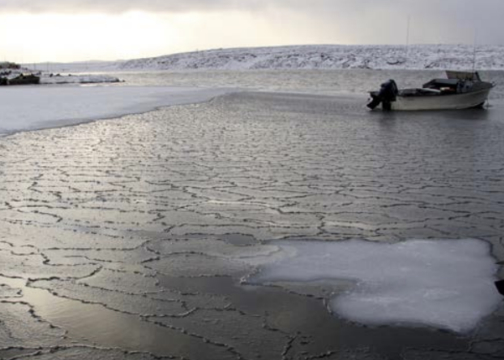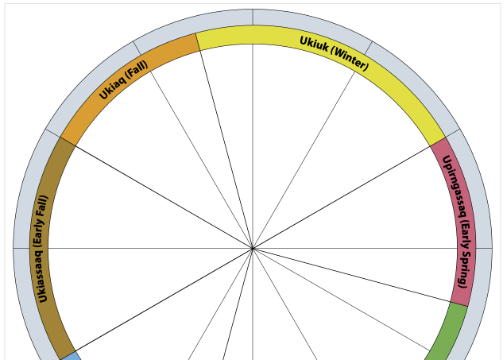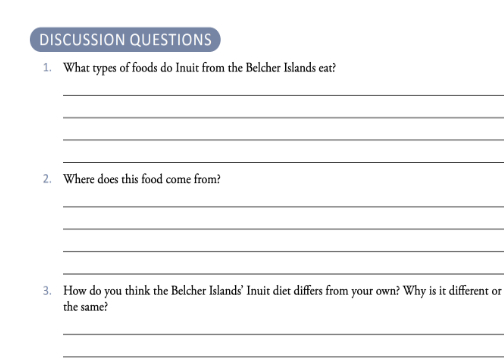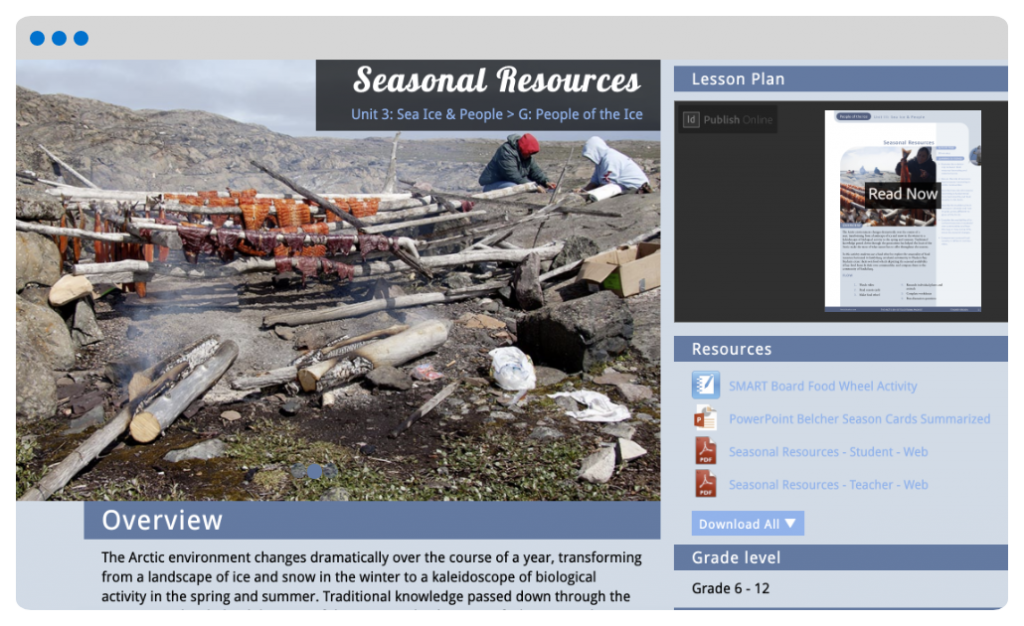Overview
In order to survive and thrive in the arctic climate, Inuit had to develop a keen understanding of seasonal cycles and a diverse set of skills for successful harvesting of wildlife and plants. They had to know the timing and specific geography of food availability and adapt to changing and unpredictable conditions year after year. What people ate was governed by the seasons, by their ability to harvest, as well as by cultural and personal preference.
In this lesson developed by the Arctic Eider Society, students can visualize and understand how different environmental and biological conditions at different times of the year give rise to the diverse local diets characteristic of Inuit communities by creating a seasonal food wheel.
1. Country Food
Ask your students to brainstorm about country food. Which species of animal and plants are found in your community? When are they available? How are they prepared?

2. Food Wheel
Divide students into groups and assign species to each of them. After learning more on these species, the groups share their information on a collective food wheel.

3. Discussion
A series of critical thinking questions, which can be answered individually or as a group, help students apply their learning to their community setting and further their reflection.

Resources
Nunavik Resources
- Nunavik Seasons
- Nunavik Food Wheel
- Nunavik Country Food Presentation

